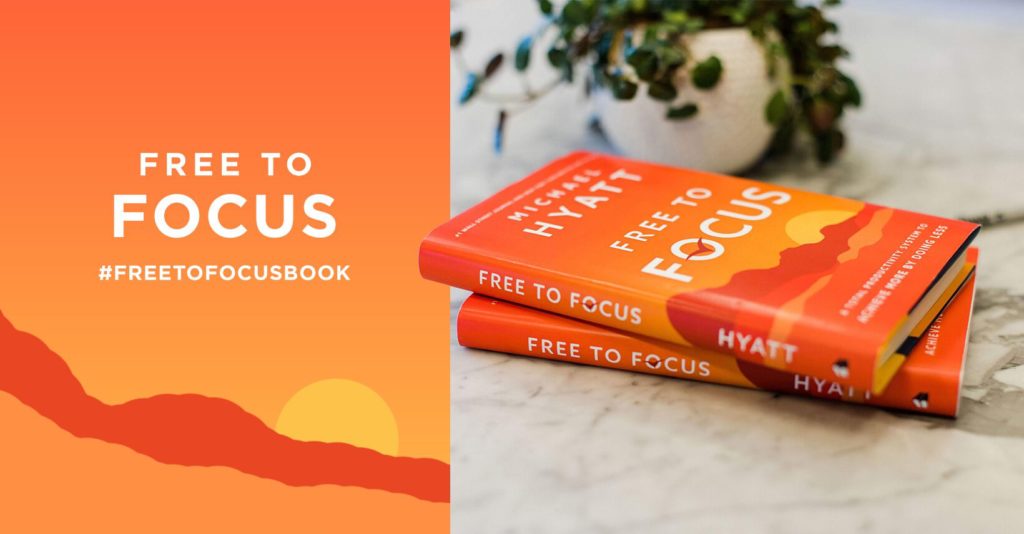Longtime readers know that I am always looking for the best tips and best practices on productivity. I believe spending the time to work smarter is always better than simply trying to work harder. Over the years, I’ve often looked at the work that Michael Hyatt who has done as some of the best and most useful writing on productivity out there. Now, he has published a book based on his successful training course, Free to Focus: A Total Productivity System to Achieve More by Doing Less. In today’s post, I will review his book and point out a few of my takeaways from it.

It is all about the flow.
Unlike many books about productivity, Free to Focus is not about the tools. In fact, it is tool agnostic. Elements of Michael’s system might work better with some software tools or the planner produced by his company, but overall you can implement his recommendations using your existing productivity tools.
I often find that productivity systems work okay for administrators who have more traditional office roles, but seem less than helpful for the irregular schedule of faculty. This proves particularly true for research faculty balancing a variety of different roles, responsibilities, and projects.
Free to Focus is an exception to this and I found that I can quite easily adapt the lessons to my work. As I balance, teaching, research, service, and my administrative role, I was able to use the workflow that Free to Focus suggests across all of my faculty work.
Doing Less, Not More
Too often, all of us in higher education fall into the trap of trying to do more and more with less and less time.
As a result, productivity is about trying to squeeze out efficiencies to get everything on our to do list accomplished. I have argued in my book, How to Get Tenure: Strategies for Successfully Navigating the Process, that this is a bad approach.
There will never be enough time to get everything done. Instead, you have to focus on getting the right things done. The first half of Free to Focus is about concrete steps to make sure that you are eliminating the things that you should and stopping those activities that are not worthy of your time.
I have personally used many of the strategies in the book and quite simply: They work.
Take Action to Achieve Success
Only after working to eliminate those activities that distract from your highest priorities does Free to Focus turn toward more traditional aspects of productivity .
The book identifies clear processes to go about to make sure you achieve success of those areas that you’ve identified as key to your work. I particularly find the chapter on planning your ideal week as key for faculty in higher education. There are so many demands on our time and the ideal week offers a way to stay grounded to key projects and work.
Most of us start off with a great plan at the beginning of the semester only to find the crush of meetings, student requests, and other pressing demands knock us off course. The ideal week process helps to identify the key projects and provide a vehicle to continually adjust to not allow those urgent but not important tasks to derail us.
Highly Recommend
I highly recommend Free to Focus: A Total Productivity System to Achieve More by Doing Less. I have personally taken the online course version of the book and read the book. Taken to heart, the ideas here can make a measurable impact on helping you achieve your top priorities. Trust me, you don’t have time to not read this book.

